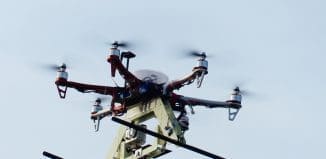The U.S. wants out of Afghanistan making mistakes along the way
This post is also available in:  עברית (Hebrew)
עברית (Hebrew)
![By U.S. Air Force photo - Master Sgt. Keith Brown [Public domain], via Wikimedia Commons](https://i-hls.com/wp-content/uploads/2013/07/By-U.S.-Air-Force-photo-Master-Sgt.-Keith-Brown-Public-domain-via-Wikimedia-Commons1-400x266.jpg)
The U.S. administration wants to get out of Afghanistan and is making mistakes in the process. This is the view of an American review body.
According to Defense News the Pentagon announced the purchase of 30 Russian-made Mi-17 helicopters to support the Afghan Special Mission Wing (SMW), an Afghan military unit commissioned to perform anti-narcotics and counterterrorism operations.
i-HLS Israel Homeland Security
But an unreleased report from the government’s watchdog in Afghanistan warns that the Pentagon should halt plans to buy the helicopters, along with 12 fixed-wing planes, until major changes are made in how the unit is supported and operated.
“Despite the planned $908 million DOD investment in 48 new aircraft for the SMW, the Afghans lack the capacity — in both personnel numbers and expertise — to operate and maintain the existing and planned fleets,” found the Special Inspector General for Afghanistan Reconstruction (SIGAR) report. “Without an effective support structure, US funded SMW aircraft could be left sitting on runways in Afghanistan, rather than supporting critical missions, resulting in a waste of US funds .”
The draft report in question, “Afghan Special Mission Wing: DOD Plans to Spend $908 Million to Build Air Wing that the Afghans Cannot Operate and Maintain,” was obtained by Defense News June 21. Because the report is a draft, it is possible the content may change in its final version. The report also lacked a Pentagon response, which would be included in the final version.
A spokesman for SIGAR declined to comment, citing office policy not to talk about reports until they are finalized.
The SMW was commissioned in July 2012, with an eye on creating an effective anti-narcotics counterterrorism unit that can operate independently of allied forces at a time when the US is withdrawing from Afghanistan. The country is estimated to produce up to 90 percent of the world’s opium, the sales of which help bankroll terrorist organizations such as the Taliban.
To support the unit, DoD plans to spend at least $908 million to purchase 30 rotary-wing and 18 fixed-wing aircraft. The Pentagon estimates there will be another $109 million per year required for oversight, maintenance, training and logistics support, which SIGAR notes will occur the “next several years.”


![By U.S. Air Force photo - Master Sgt. Keith Brown [Public domain], via Wikimedia Commons](https://i-hls.com/wp-content/uploads/2013/07/By-U.S.-Air-Force-photo-Master-Sgt.-Keith-Brown-Public-domain-via-Wikimedia-Commons1-700x466.jpg)


























